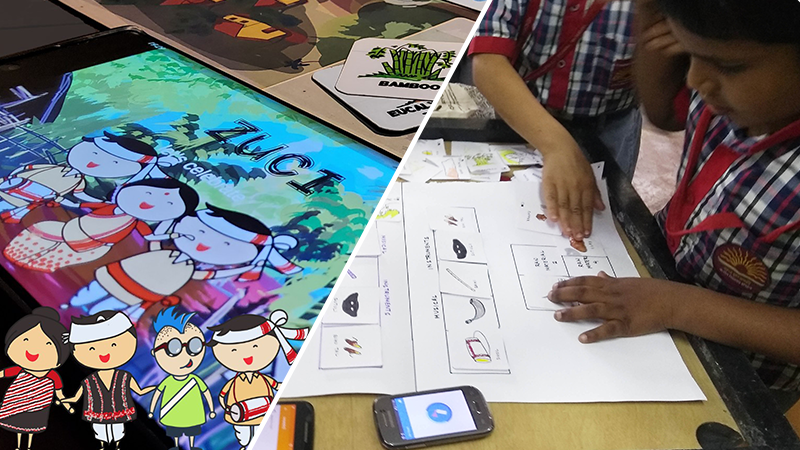Sharing knowledge about Folk musical instruments

OVERVIEW
Background
Traditional folk musical instruments are facing extinction in many parts of India due to decrease in its user base. In order to develop a future user base of people with a better awareness of these musical instruments , the goal of this study was to identify an effective medium for teaching younger audiences about these instruments’ construction processes, sounds, and events they are played at.
Objective
Through this study we aim to introduce different mediums of instruction to children above age of 8 years and observe how they respond to them. Three medium of instructions will be through – reading materials, slide presentation with audio, and a collaborative multiplayer game. All three medium will consist of information about the construction process of these instruments and their respective tunes – except for the readable material.
Participants will be divided into three groups – each group will be exposed to one medium of instruction. We will determine the efficacy of each medium through the performance of participants using a questionnaire. The questionnaire is designed to calibrate the knowledge retention after using each medium. The questionnaire will be provided to each participants after their exposure to their respective medium.
Conclusion
The groups with exposure to slide presentation and game was observed to perform better in their questionnaire with an average success rates of 91.17% and 94.11% respectively than the group exposed to reading material with average success rate of 77.27%.
METHOD and EVALUATION
Prototypes
The aim of the prototype was to communicate the manufacturing procedure of the musical instrument, its properties and the sound. In order to do so, three prototypes were made: A book, a presentation, and a puzzle based game. We chose to share information about three folks musical instruments from Assam, dhol, bahi and sutuli. These three instruments among others, are played during the Bihu Festival of Assam. The data about these instruments were collected from Barluiotor barbhoirab – both from the book and the documentary.



Evaluation plan:
The success of each artifacts was tested based on the learning outcomes obtained through the prepared questionnaire. To identify the best medium of introduction, a total of 12 participants were divided into 3 groups. Each group consisted of 4 participants. Each group was exposed to one artifact - namely, a game, or a book(containing only textual information), or a presentation(containing both textual and audio/visual information). After the exposure, each participant were asked to answer a questionnaire.
The questionnaire consists of two sections:
- section A( questions related to name of the instrument, graphical representation of the musical instrument, and materials involved with construction of instruments,)
- section B(questions related to the musical tunes produced by these instruments)

Participant selection
Participants recruited will be from IIT Bombay Campus School, IIT Bombay, Powai; 4th standard.
Total number of participants: 12 divided into three groups
participants in each group: 4
Age group: 9-10 years.
Place: Classroom(4th standard), with four children at a time.
Gender: 2 Female, 2 Male
Testing
Study was conducted at Campus School IIT Bombay, with a total of twelve(12) children from 4th standard, four(4) children in each group. Each group was tested separately on three different days.


FINDINGS
The groups with exposure to slide presentation and game was observed to perform better in their questionnaire with an average success rates of 91.17% and 94.11% respectively than the group exposed to reading material with average success rate of 77.27%. We concluded that the protocol made for the study was not standardized for the three groups and hence need to be worked on. The questionnaire prepared was also understood to be not of the required standard. The questionnaire will be improved for the later studies.
FUTURE PLANS
In future we would like to explore the possibilities of both identifying and motivating users towards the usage of folk musical instruments. As an extension of this study, we worked on to create a collaborative multiplayer game - Zuci . Our future plans also includes creation of standardized protocol to test the existing artifacts related to similar work(documentaries and books) for the effectiveness of the product.
FIN.